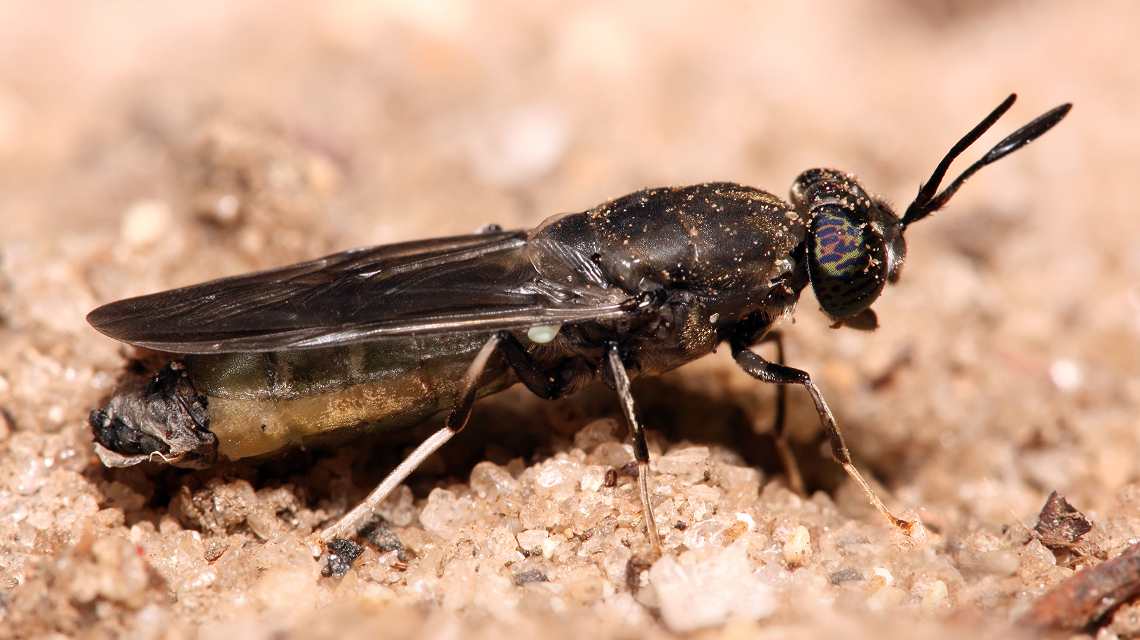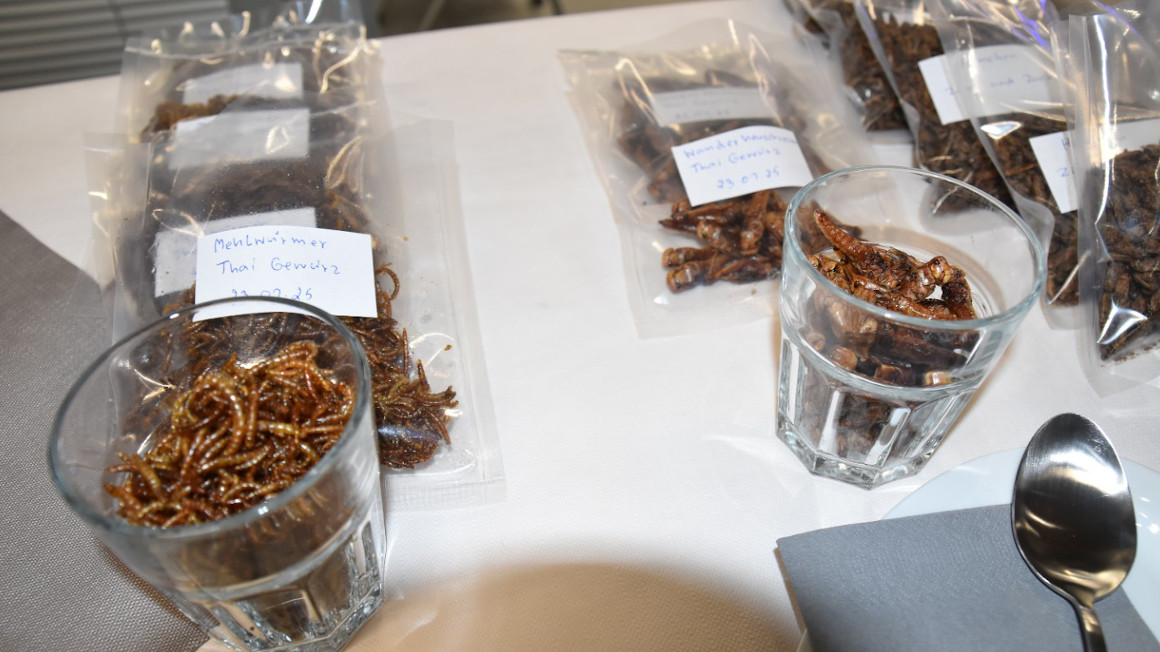
Insects, worms, and crabs are already a delicacy in many countries, and due to their high protein content they are also more and more appreciated as a healthy alternative food source in Germany. Although they’re still rarely seen on the menu of our restaurants, they’re gaining a lot of momentum with scientists for one simple reason: their shells contain chitin, the second most common polysaccharide on this planet – surpassed only by cellulose. Because of its structurally sound and biocompatible properties it is particularly well suited for medical products like implant coatings. At the same time the biopolymer is also being used for the technical manufacturing of chitosan, which in turn is being used for fibers, foam materials, or films.
Using insects as a chitin source
Until now the main source for chitin were crab shells. As part of the cooperation “ChitoTex” scientists headed by the Fraunhofer Institute for Interfacial Engineering and Biotechnology in Stuttgart are now aiming to isolate the biopolymer from insects for the first time. The goal is to preprocess the insect-chitin to be used as fiber coating in the textile industry. The three-year project started in 2015 and is subsidized by the Federal Ministry of Education and Research (BMBF) with €1 million.
Making textile fibers resistant
The first application of the new biopolymer will be for the coating of materials that are used for work clothes. It is common practice to add so-called sizing agents to textile fibers in order to stabilize the threads and prevent them from breaking during weaving. The chitin-derivative chitosan for instance is being used as a sizing agent. This is where “ChitoTex” steps in. Project leader Susanne Zibek explains “If you modify the chitin, the textiles could be water- and stain-repellant after the treatment, which could replace common coating practices. This way we could forego the use of perfluorinated hydrocarbons.” The project partner ITV Denkendorf, Lauffenmühle, and Petry will investigate these questions.
The black soldier fly as a chitin source
The Dutch company and project partner Protix is breeding the black soldier fly and is thus providing the chitin for the Stuttgart-based team surrounding Zibek. In a first step the researchers asked where most of the chitin was being produced – in the cocoon or the exoskeleton. “To that end we need to investigate and analyze the different waste streams. Because the raw chitin contains many more ingredients”, explains Zibek. Besides protein these ingredients are calcium and color pigments that need to be filtered out before the insect-chitin can be processed any further. The Stuttgart-based scientists are the first to attempt the isolation of chitin from insects.
Using enzymes to transform chitin into chitosan
In order to transform the insoluble chitin into water-soluble chitosan the scientists are using not only alkali but also enzymes. The Norwegian partner NMBU and the Austrian company Eucodis provide, analyze, and characterize these enzymes. “In the beginning we were looking at a lot of candidates. Now we are using ten enzymes and hope that in the end we will find three that we can use to generate a cocktail. The fewer enzymes we use, the more economical the production.” The researchers hope that with the right enzyme cocktail they will be able to produce sufficient amounts of chitosan for an industrial application.
A promising future for insect-chitin
There is a good chance of success. After almost two years of research the first results are positive. “We are already able to purify the insect-chitin and to chemically customize it by means of a long chained hydrophobic molecule. Moreover, we have selected a range of enzymes that we are now analyzing,” summarized Zibek. The Fraunhofer researcher already provided first samples of the chitosan-based agents to project partners in the textile industry. As a next step Zibek and her team aim to decipher the “secrets of the enzyme cocktail” and are planning to add further specialized molecules to the mix, which will provide additional functional properties to the chitosan-based agents.
A successful – albeit elaborate – procedure of isolating and processing chitin from insects would enable a new and sustainable source of chitin. The expensive import of shrimp shells could be replaced by a biological resource that can be bred locally.
Furthermore, and similar to the crab-shell analog, the insect-chitin could also be useful for biomedical applications or for the agriculture industry as plant- or fertilizer-additives.
Author: bb/jmr


